As part of our series from Latin America, Cecilia Turín explores how traditional herders continue their alpaca farming in parts of the Andes, and what the future might hold, with many challenges and some signs of hope. This piece draws on Greta Semplici’s research project carried out in collaboration with Pablo Manzano. All pictures are by Greta Semplici.
The pastoral systems of the Andean south of Peru, in the regions of Puno and Cusco, are ancestral production systems which have developed in the rangelands of the puna, the high mountains. They are managed by indigenous pastoralists who specialise in breeding mainly alpacas, as well as some llamas and sheep. Just over half of the national alpaca population – around 3.7 million – lives in these areas.

These camelid herders are the biocultural heritage of the Altiplano, the centre of domestication of South American camelids. These socio-ecological systems have developed in very challenging natural conditions at high altitude (4000-5000 metres), which are intensely cold and dry.
Dispersed in landscapes dominated by a diversity of rangelands and bofedales (Andean wetlands), these systems are directly exposed to the effects of climate change on a daily basis. People here also face conditions of extreme poverty, with no options to diversify their livelihoods and limited development opportunities. Transport is difficult, there is poor access to basic services, and people are dependent on connections to other systems for food security.
Pastoralist families in this area are mainly small producers, with an average of 100 to 300 animals, relying solely on family labour. They practice traditional management using a system of holistic ancestral knowledge that is little valued and studied. This involves the management of the territory, landscape, climate, soils, water, rangelands, livestock, genetics, reproduction, diseases, production and transformation of fibre (textiles) and dried, salted meat (known as ch’arki). This traditional pastoralism is the most common way to rear alpacas in the area, although there are a few producers who use more modernised technologies and methods.
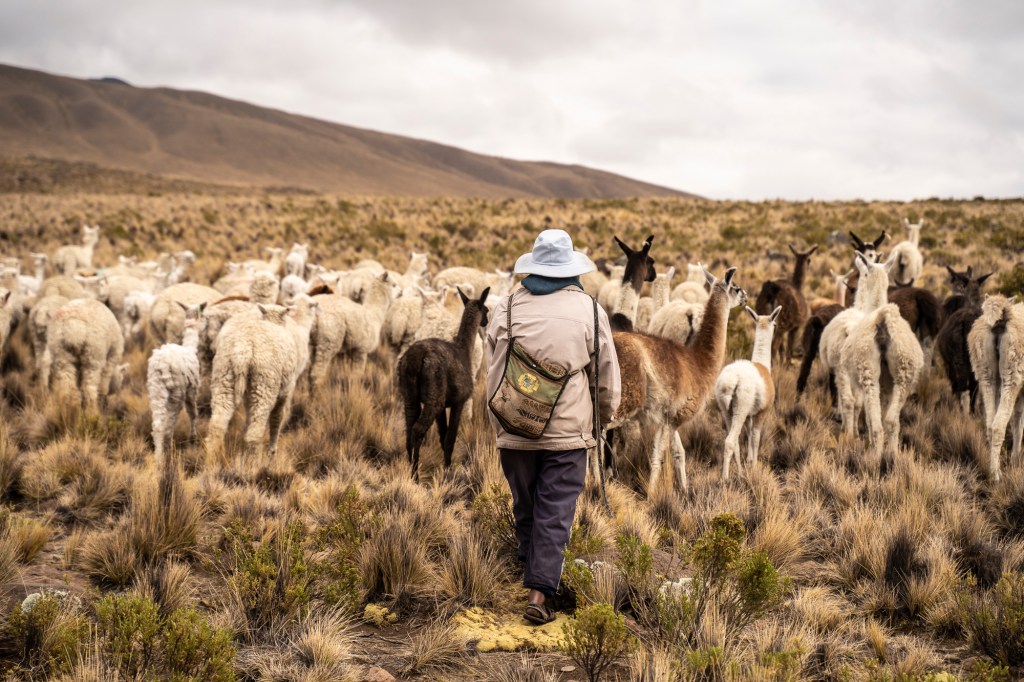
Seasonal patterns
The management of these traditional systems is organised according to the seasons. This means that the calendar of livestock activities depends on the availability of rangelands and bofedales, which in turn depend on the climate and the availability of rain and water. There are two distinct management periods, one in the shorter rainy season from December to March, and the other in the longer dry season from April to November.
From January to March, pastoralists move to the hills, staying in temporary huts. While there, they move around horizontally on the hills on a daily basis, and vertically between higher and lower ground, gaining access to two types of rangelands: dry grasslands and bofedales.
When the dry season begins in April, they move back to the pampa, and stay there in their main residence from April to December. While there, they do vertical movements between pampa and ladera, and horizontal movements (daily rotations), in their access to dry-grasslands and bofedales.
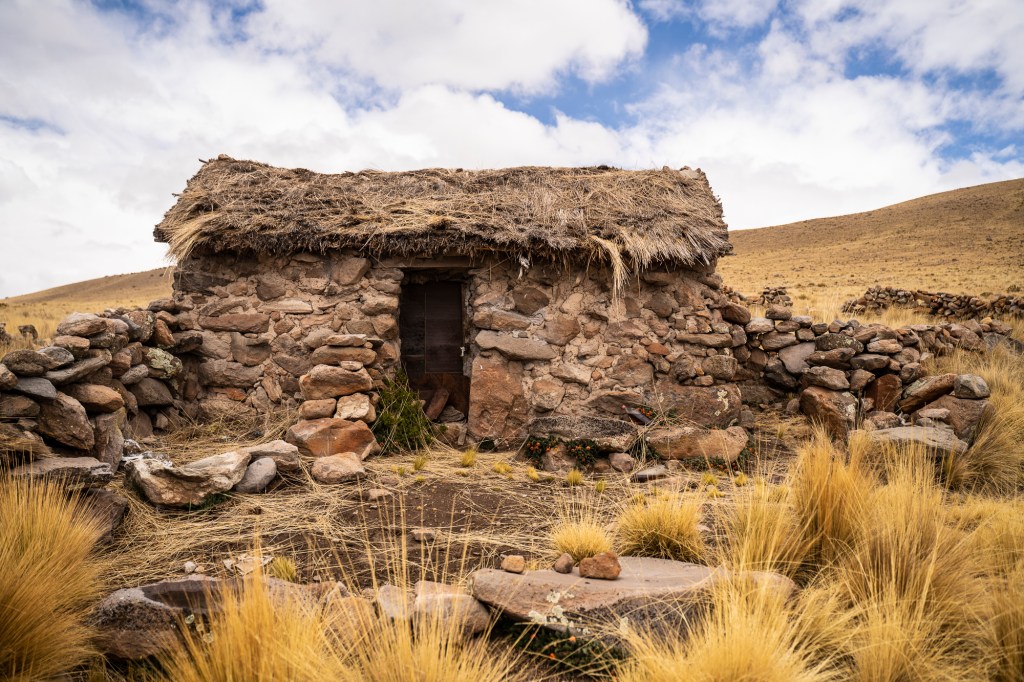
Making a living
These pastoralists are primarily devoted to the production of alpaca fibre, and secondarily to the production of meat. Fibre production is mainly important for the textile industry in the neighbouring region of Arequipa, which accounts for 80% of the national production of alpaca fibre.
Alpaca fibre production is traded through very asymmetrical export markets. Producers remain in extreme poverty, while the alpaca textile industry is prosperous and successful. This value chain has not been modernised, and it maintains commercial exploitation schemes from the 19th and 20th centuries, paying prices to the producer only for the material economic value, without considering ecological, social and cultural values.
Alpaca meat production is oriented towards local markets. For this reason, it often falls off the radar of national and international development programmes that are oriented towards food production. As a local product, however, it plays an important role in the food security of vulnerable families.

Cultural values
For camelid herders, though, raising camelids is about more than just generating livestock products to sustain their households. Breeding for them has a spiritual meaning, connected to their ancestral culture and their Andean agro-cosmology.
The puna pastoralists raise the alpacas with great affection, as if they were part of their family. It’s as if they were fulfilling the task entrusted to them by the gods to look after the alpacas with extreme care and affection, because if they did not do so, misfortune would befall them. According to the legend of the paqarina, if the alpacas disappear from the face of the earth, so does life.
Since they have an integrated vision of camelid husbandry, these pastoralists do not only focus on harvesting fibre and meat, but also raising offspring, and caring for rangelands, bofedales and water, which together form life. Unfortunately, this cultural aspect, which is more related to the herder’s ecological role, has been undervalued by government, academia, industry and urban society. For the herders, the alpacas represent life, their home, their connection to the land and their culture.
Luis Copari is an alpaca and llama herder from the Apopata community in the south of the Puno region. He lives alone in the countryside, managing a herd of about 300 alpacas and 50 llamas on about 300 hectares. He has a family, but they live away from here. His rangelands and bofedales, despite being in the dry-puna and at the end of the dry season, are healthy, well-tended and well-watered.
Luis says he understands the land, the rangelands and the alpacas; he knows what they need as they know he needs them, and he knows when they are happy. They understand each other as if working together with a special connection. As a good shepherd, he is attentive to any sign or indicator related to their production and livelihood. Ancestral knowledge is reflected in the good health of the rangelands and their animals.
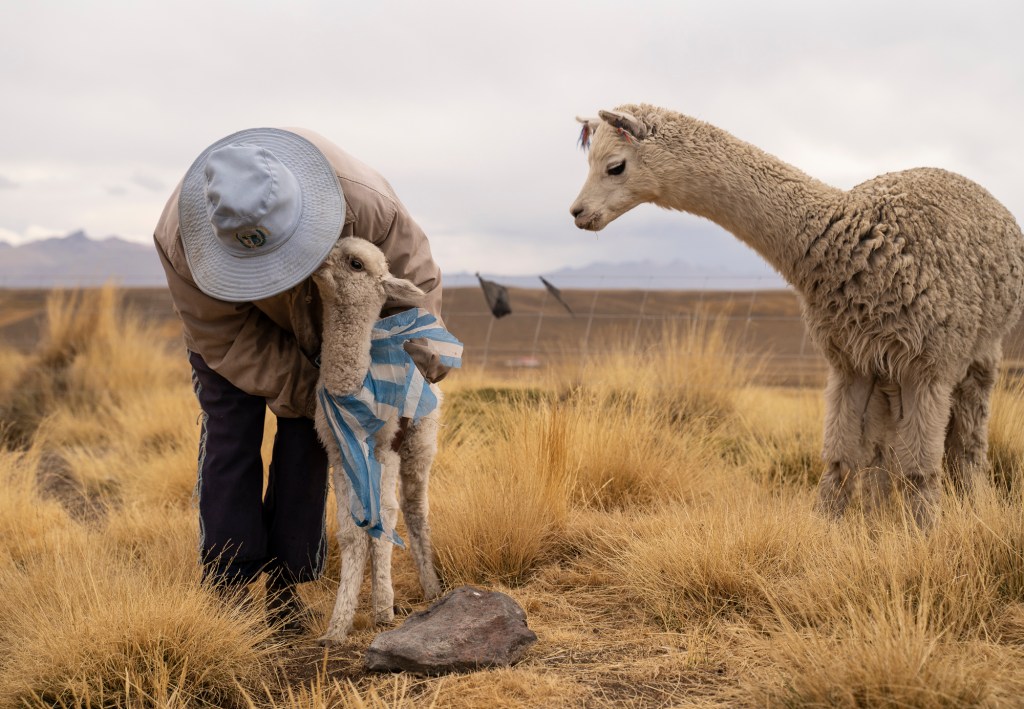
Recent changes and their effects on pastoral systems
Climate change and climate uncertainty
Although alpaca herders have managed rangelands and alpacas for centuries, environmental and social changes have affected their capacity for sustainable management and decision-making. In this sense, pastoral systems have adapted to climatic and social changes, but not necessarily always in a sustainable way.
Climate change in these areas has been accompanied by low rainfall, intensified frosts and droughts, and occasional periods of intense and prolonged snowfall. This has meant that the dry months have been prolonged and the rainy months have been reduced, generating less water availability in the ecosystem.
This reduced water availability has directly affected the primary production of rangelands and bofedales, many irrigation systems no longer function, and hill springs are no longer charged. The charged waterholes signalled the beginning of the grazing season on the hill as it guaranteed the availability of water for the consumption of the herders’ families, animals and irrigation. The seasonal vertical movement of the herders is interrupted by the dry waterholes of the hills.
The grazing trajectories were altered, and they went from spending three to four months at a time in one place, to stopping two or three days in some cases, or just one day; in other areas, they have even ceased grazing at all. The rangelands on the hills, already rested and regenerated throughout the dry season, enter a process of senescence when they are not grazed, causing their primary production to decline, and affecting the rangeland health. Senescent grasslands are not consumed by animals, so grazing areas are reduced.
In this way, pampas and hillside rangelands that rested and recovered in the rainy season, and were reserved for the dry season, began to be used more intensively. Likewise, with dry springs, the irrigation of the rangelands and bofedales on the slopes and pampas has been interrupted. The hills are no longer under the grazing pressure to which they were accustomed, and the lack of irrigation could be a factor in degradation. The increased grazing pressure on the hillside and pampas, on rangelands that have not been irrigated, could also be a factor in degradation.

Another effect of climate change on pastoral systems is at the level of the livestock calendar, especially around two important tasks: shearing and calving.
Shearing usually occurs with the first rains in November, before the start of calving in December and January, as it indicates that the rangelands will recover and the alpacas will have food to recover as well. At the end of the dry season, the rangelands are dry and no longer nutritious. As the dry season continues until December, the rangelands become scarcer and the animals become weak from malnutrition. In these conditions, herders avoid shearing them because of the risk that they will become sicker as a result of being exposed to the intense cold.
Lack of pasture due to prolonged drought also prevents the mother from feeding well at the end of gestation and the offspring from developing properly. This has caused the first calves in December to be born weak and with little chance of survival, so that the calf mortality rate has increased due to climate change.
This phenomenon could be observed among the herds of Antonia and Justo Pataca, an elderly couple of alpaca herders from the Apopata community, where in early December the calves started being born; but they had not completed their growth, so they only lived for a couple of days and then died.
Climate uncertainty makes it harder for the herders to adapt their traditional pastoral management, and to incorporate climatic factors into their livestock calendar.
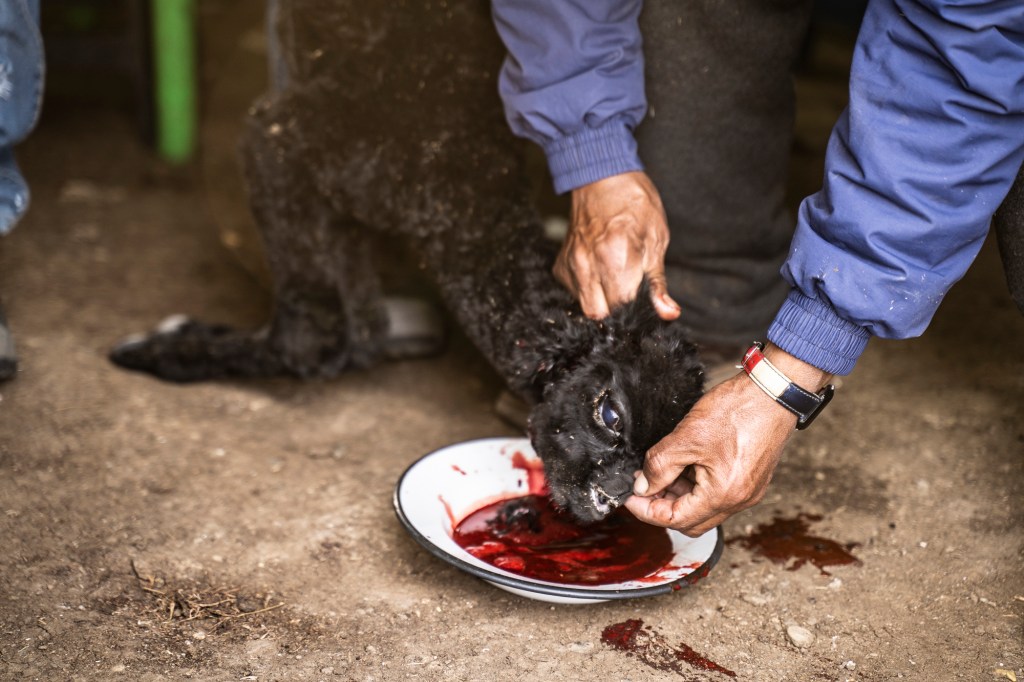
Ageing and migration
Social change has taken place at family, community and societal levels, including government, academia and civil society. Social changes are very complex and are the least understood and studied.
One of them is the ageing of pastoralists and the absence of generational turnover. Previously the nuclear and extended family was in charge of pastoral systems and there was a division of labour. Now most herders are elderly, either in couples or single men and women, the young have migrated to other parts of the country or the region. There are far fewer young people in the area than in 2010, when the average age was 63; now the average would be close to 70.
The labour force is scarce, and the elders who take care of various activities in the system are not able to cope. Older people do not have the physical capacity to continue with the labour demanding traditional management of the pastoral systems of seasonal vertical movements (over longer distances), but are only able to carry out the daily (short) horizontal rotations. Antonia from Apopata tells us that she no longer goes to the hills because she has no strength, as she is older. This means that practices such as irrigation and guaneo (manure spreading) have been abandoned, with serious implications for pasture production.
Migration is also interrupting the transfer of knowledge from parents to children. This has led to the loss of valuable knowledge and the abandonment of ancestral management practices.
Old age, labour shortages, pandemic and poor conditions have reduced pastoralists’ capacity to sell their produce. Whereas before they used to take their products to the market to sell and could choose only a few trusted traders, now, due to the herders’ limited mobility, the market traders go to the farms and pay what they think they can afford.

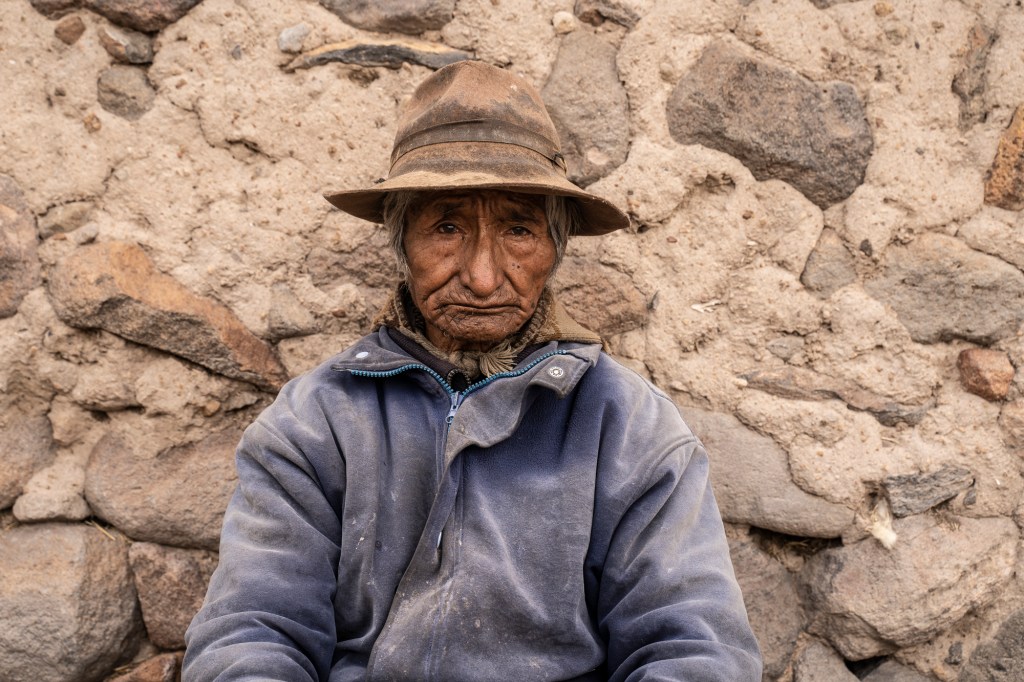

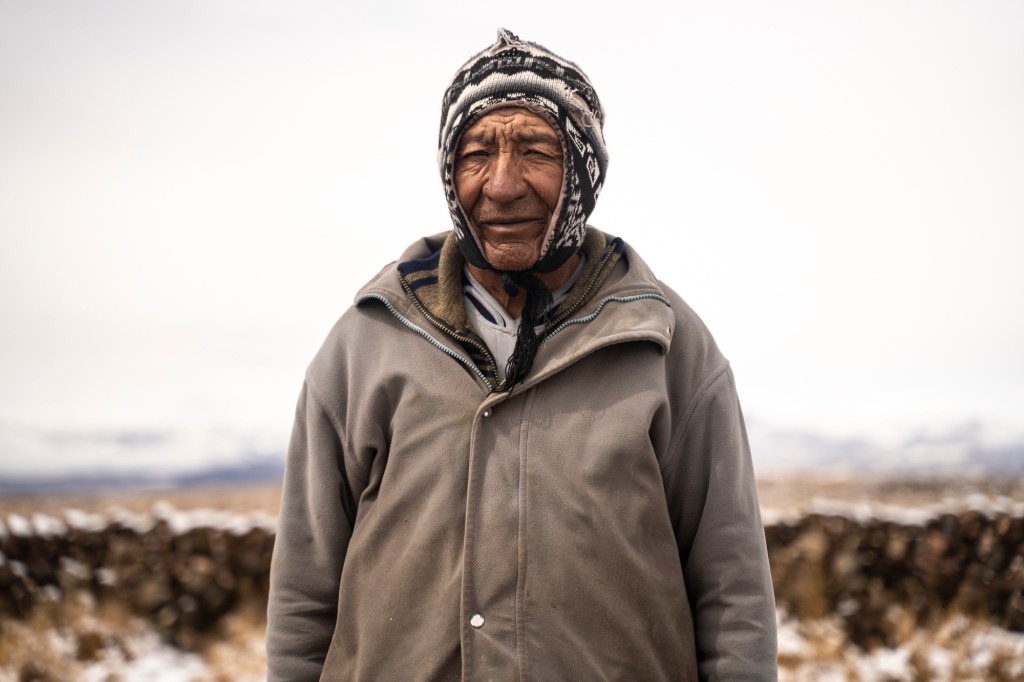
Young people who have migrated have become disconnected from Mother Earth and traditional management, and are not interested in continuing the hard work of grandparents and parents.
Those young people who receive the land and are interested in taking over the management, do so (or want to do so) with new technologies, such as semi-intensive systems: these involve using permanent fences, wells, the conversion of rangelands to cultivated pastures, and sowing fodder, among other things. These systems are aimed at improving fine fibre production and producing breeding stock for sale. Fences limit grazing. All this affects the resilience of pastoral socio-ecosystems, and could be linked to rangeland degradation.
Absentee management
Although young people or adults have migrated and disconnected from pastoral management, they still maintain property rights – especially over livestock, but also over land. This results in herds having more and more owners. This means that families keep livestock belonging to many people who benefit from it without contributing to the management of the system, and who live away from the land. For some, it’s also a way for them to maintain a connection with the land of parents who have died, where they spent their childhood.
Griselda Yupanqui is a young woman from Toxaccota, an heir of pastoralist parents, and she says that she would like to keep her parents’ land and alpacas because they remind her of them. But it’s a hard life, with many sacrifices, that she does not want for herself and her daughter. While she and her brothers and sisters decide what to do, the land and animals are managed by a hired shepherd.
Another change observed at the family level is the increase in the number of undivided plots of land. These are passed down from parents to children as whole units, because they have reached the minimal possible size to maintain a pastoral system. In other words, these are lands that can no longer be divided, as they would no longer be functional for pastoral territorial management.
As a consequence, management with hired shepherds and shift management has also become more frequent: the new owners of the land agree to share the management of the grazing system and take over for a short time during the year. This type of management called “turnos” is usually temporary, as it is not very sustainable over time: it is not compatible with the lifestyle of the inheritors of the land, who mostly live elsewhere. Management using hired shepherds then becomes more frequent.
The hired herders are now mostly older adults, not young people as in the past. Payment for hired herders used to be in currency, but now it is paid with access to grazing land for their own herds. Becoming a hired herder, therefore, is a strategy to gain access to grazing land. Not only landless people become hired herders, but also those with a need to rest and regenerate their land.
These deferred management modalities may be related to degradation. There are multiple ways of accessing land these days, such as renting land and buying land among the formal and internal arrangements between families. Limited access to grazing land would also be a factor pushing adults and youth out of the family and community.
Conflict and fragmentation
At the community level, communal organisation has been weakened by conflicts over grazing land and water, the exhaustion of elderly leaders who have to take on more authority position and the weakening of rules.
In addition to all this, the puna pastoralists are dealing with the loss of solidarity between families, the increase of individualism and loneliness, the lack of understanding, and the lack of interest on all sides. This includes a government that does little to support them, and a civil society that ignores them completely and only remembers them when there is a climatic event – such as prolonged snowfalls where alpacas die of hunger and cold, making the television news.
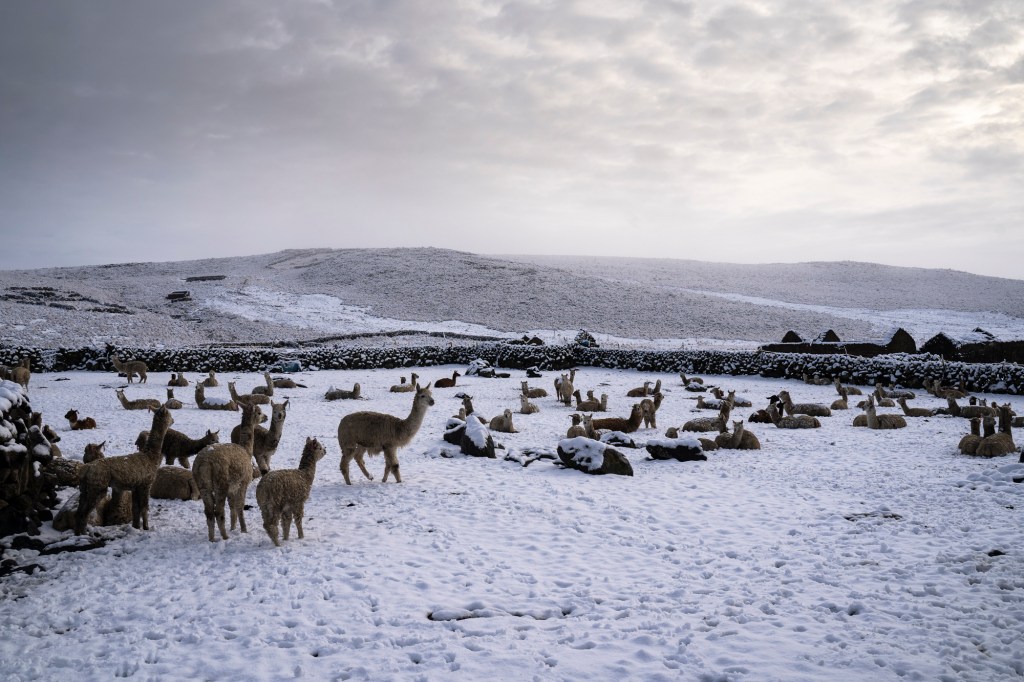

Policy pressures and support
These changes at the level of the environment and pastoralist societies are in addition to some changes at the level of government and civil society.
The government, through the offices of the Ministry of Agrarian Development, the Ministry of Development and Social Inclusion and local governments, continues to promote and facilitate the installation of permanent fences, the installation of cultivated pastures, the planting of forage crops such as oats, which implies the conversion of rangelands into cultivated areas to improve the productive infrastructure. These technologies promote the intensification of the system and are incompatible and challenging with pastoral management.
In order to improve the productivity of the systems, research and development projects for genetic and reproductive improvement aimed at improving the production of fine fibre continue to be promoted. In addition, they have installed more animal welfare sheds to adapt to the increase in intense cold and frost. In all cases, pastoralist families are called on to provide labour to help with installation.
In times of climatic emergency due to prolonged snowfall, the government sends food and medicine for both people and animals.
In recent years, in a context of water scarcity, there has been greater emphasis on water management and the role of the puna pastoralists in the headwaters of river basins, with the planting and harvesting of water, the installation of reservoirs, and the recovery of ancestral water management systems such as the cochas (oxbow lakes). This implies a recognition of the role of pastoralists in adapting to climate change, but at the same time it imposes a further burden on the scarce labour available to them.
On the other hand, since 2018, the government has been improving the living conditions of some pastoralist families in these areas with the installation of drinking water, drainage, solar panels, improved houses and toilets. This has been a significant change for the families who were able to contribute their time and labour in order to receive this support, as these populations did not have basic services.
In some cases, this support has arrived late, as the elderly population are hard pressed to provide the necessary labour to help with the installation. Families with better living conditions are better able to cope with climate change.
Attitudes towards pastoralism
Academia, NGOs and industry have also contributed to the promotion of technologies that promote intensification. These include the conversion of rangelands into cultivated pastures, and the policy of focusing on the production of fine fibre as the only productive potential of alpaca breeding.
Neither the government nor these other actors have modernised or updated their approaches, or the perceptions and paradigms through which they view pastoralists. The government still considers pastoralists as a backward population to be supported and not developed. The academy still perceives pastoralists as mainly responsible for the degradation of rangelands and bofedales, without understanding the socio-economic and ecological situation in which they find themselves, nor the challenges they face in maintaining sustainable pasture management with ancestral knowledge and practices, which are not studied either. Their restoration plans barely include the ancestral knowledge of pastoralists.
Industry and value chains, for their part, still maintain very vertical and top-down marketing schemes, without giving the option of fairer, more inclusive and sustainable chains. Civil society in general still does not recognise or value the livelihoods of puna pastoralists in these areas, due to ignorance and social prejudice against the indigenous population.
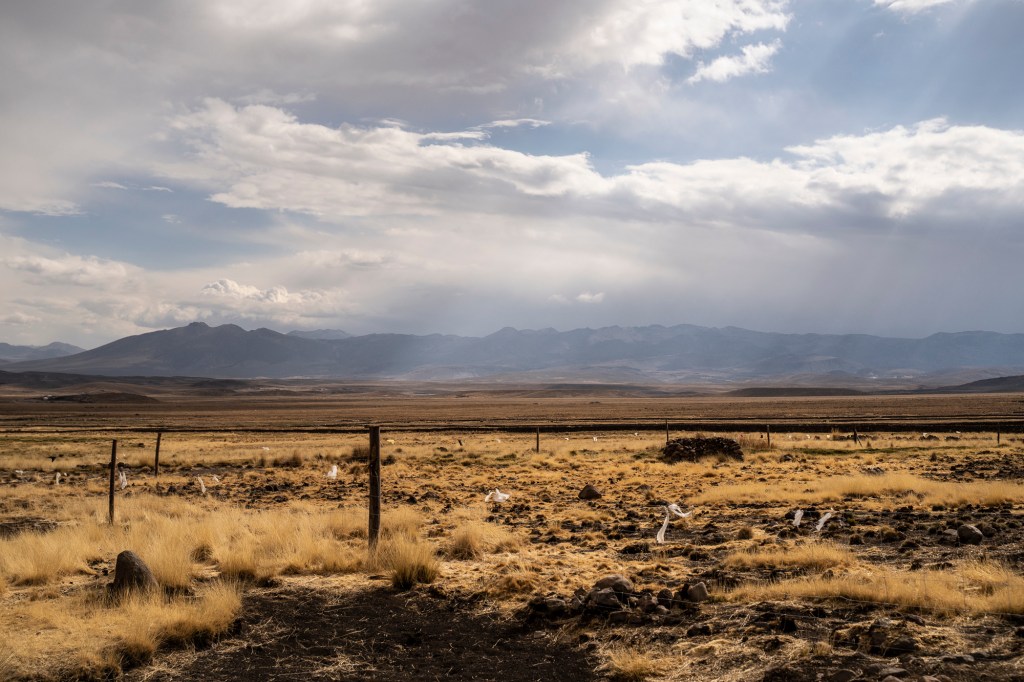
An uncertain future, but with possibilities
With so many changes in the pastoralist systems, several questions arise that shepherds themselves also ask. Who will continue the pastoralist systems if most of the shepherds are old, and younger people do not have the knowledge or interest to continue with pastoral management?
The shepherds also wonder what the future of their land and animals will be. Who will look after the rangelands and the alpacas when the shepherds are no longer around? Luis reflects: “The day I am gone, the land and the alpacas will miss me because I am the one who looks after them with great affection, just as I will miss them because they are my life.”
Climate variability is becoming more and more frequent, which does not give herders any security to adapt the livestock calendar. Pastoralists have to live with this uncertainty, which often prevents them from making good decisions.
Ancestral knowledge is key to present and future sustainable management. It is not known whether this will be the last generation of pastoralists with ancestral knowledge. Its loss must be prevented. The academy should study and document it for preservation and potential use in restoration plans, and eventually for use by future generations.

The new environmental and social contexts require innovative and strategic changes by all actors: government, academia and industry. They must update their reductionist approaches and consider more holistic and integrated ways of seeing these contexts, through social and environmental justice, recognising the non-equilibrium nature of ecosystems.
From integrated and socio-ecological approaches, puna pastoralists are seen not only as producers of fibre but also as guardians of carbon stocks in the soil, guardians of water, of ancestral knowledge, and of high Andean landscapes. Instead of being seen as the cause of degradation, to be excluded from restoration plans, they are seen as potential partners in restoration, contributing their ancestral knowledge.
Alpaca herders play a strategic role for the health of the puna ecosystem and the conservation of its ecosystem services. The country and the planet are indebted to these livelihoods because their carbon footprint is minimal, and their contribution to carbon sequestration is important.
Similarly, industry and markets must modernise their working schemes with alpaca fibre producers. Paradoxically, the industry and the market produce and sell costly garments, while the pastoralists who produce alpaca fibre are among the most vulnerable group in extreme poverty. The production of alpaca fibre from an integral and socio-ecological approach not only has a material production value, but also an ecological value (organic production, low carbon, and water regenerative) and a social value (in terms of biocultural heritage).
Finally, the country has been living in uncertainty due to political instability since 2016, which has plunged the country into a socio-political crisis since December 2022. The indigenous communities are calling for real changes in the country’s governance, since for 200 years power structures have been in place that exclude them from development. Pastoralist communities were also represented in this movement, because they are the human group most excluded from the country’s development.
Despite this, there are opportunities. The declaration of the International Year of Rangelands and Pastoralists – IYRP 2026, as well as the International Year of Camelids 2024, offer some glimpses of more optimistic futures. The Peruvian government is preparing a letter of support to the IYRP 2026, demonstrating its willingness to be more inclusive and recognize the alpaca pastoralists’ contributions. The Ministry of Environment in Peru has begun a programme of compensation for hydrological ‘ecosystem services’ in other high Andean areas of Peru, the results of which are promising for the alpaca pastoralists of southern Andean Peru.
These are opportunities for all actors in the country and the planet to revalue rangelands, their role in ecosystems, and the strategic and invaluable role of pastoralists. They offer a chance to propose development models where pastoralists are included and not left aside; a more understanding, inclusive and appreciative civil society; and fairer markets focused on ecological integrity and social wellbeing.

About the author
Cecilia Turín is an animal scientist with a Masters in Agricultural Extension and Doctorate in Rural Sociology. Cecilia is a researcher and consultant expert in south American camelids, Andean pastoralism, mountain livestock and socio-ecosystems.
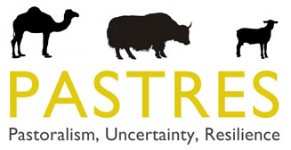
Thank you for the well written informative article about indigenous knowledge in the Andes.
LikeLike
This is the situation of Pastoralists elsewhere. Education of youth is important in the value of traditional pastrolaism by incorporating few innovations which enable their income and status.
Vivekanandan India.
LikeLike
Sharing such experiences about the Alpacas is informative, especially for those living on the other side of the Atlantic. The South American camelids deserve better attention from donors and scientists as they are the least studied in light of their socio-cultural depths as well as ecological and economic advantages.
I had the chance to visit a smallholder farm located at the outskirts of Brasilia, Brazil. The host farmer had about 10 ha of ‘ idle’ land and from his circumstances I could understand that his families appeared highly impoverished and in need of external support. I compared this encounter with my own community in Ethiopia’s Tigray region where the landholding is barely less than 0.7 ha. Similarly, Andean pastoralists who own upto 300 ha grazing land are leading a precarious life. Then, I asked for myself how will the scientific and development community deal with poverty issues facing these contrasting communities whose sole livelihoods depend on agriculture?
If the world is to identify solutions and respond to the complex crises facing pastoralists in Africa, Europe, the Americas, Asia, and Australia, we need to understand pastoralism and its fragile ecosystems at the most finer scale.
LikeLike